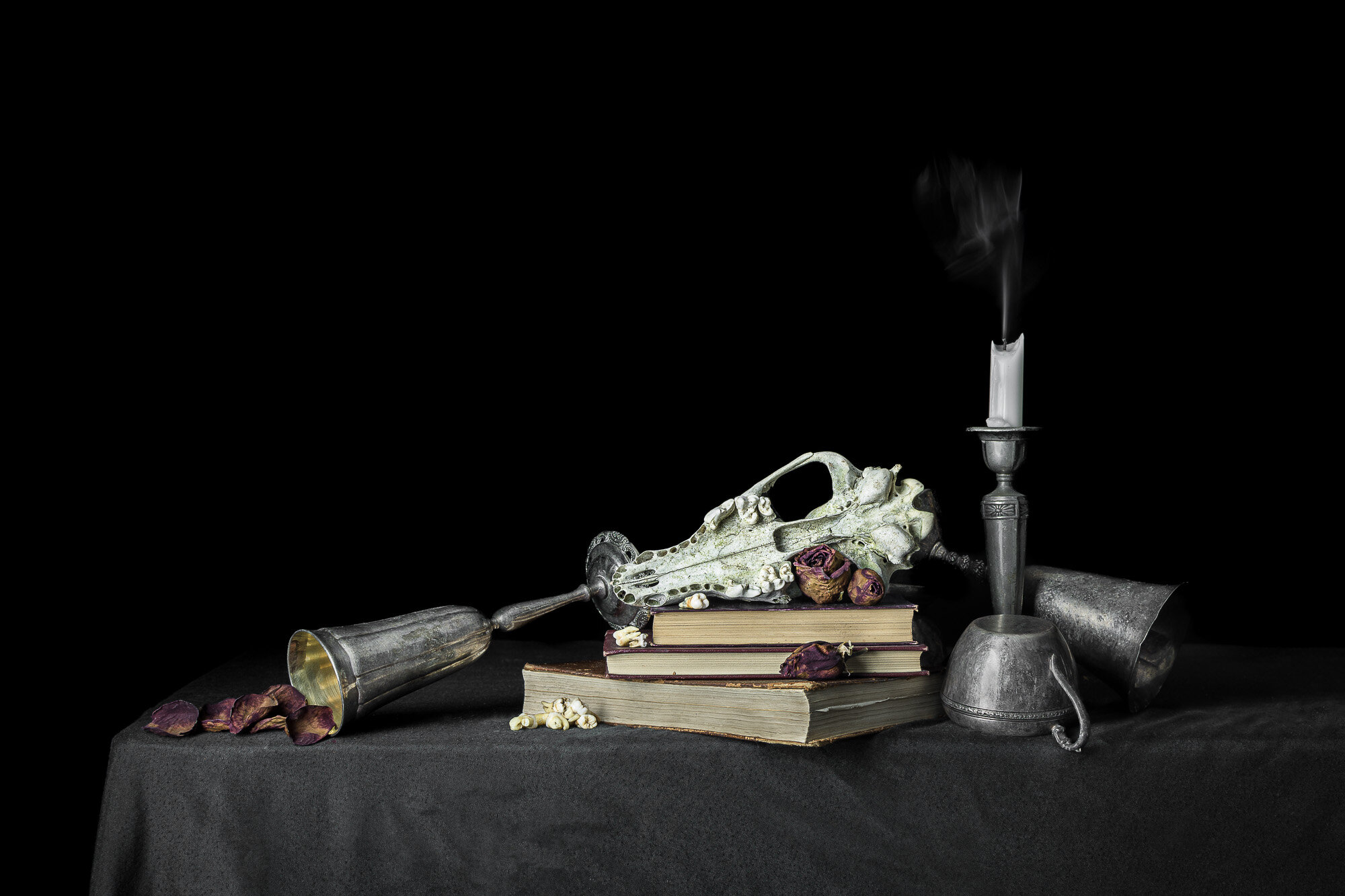Books and Bones
Vanitas with Skull and Books
In the middle ages, book production involved a lengthy and labour-intensive process in the scriptorium of a monastery. Books were expensive, inaccessible, and their production was undertaken largely in the service of theology.
With the invention of the printing press, an expansion of university education, and various technological advances (such as a move from parchment to paper), books became increasingly secular and increasingly accessible to the middle/lower class. From 1500 to 1600 Europe saw an enormous increase in the production of books and it became possible to disseminate information at a speed hitherto unknown.
As with the emergence of any new media, this progress was met with backlash from social conservatives and traditionalists. In the year 1600, Barnaby Rich complained that availability of books was one of the “great malaises of this time,“ since they “have overfilled the world so much that it is no longer able to digest the overabundance of useless material that is hatched every day and put out in the world.“
Vanitas painting by Pieter Claesz
Some of this anxiety surrounding the availability of literature is manifested in the role that books play in still life paintings from that era. Images like this painting by Pieter Claesz place aging and damaged books alongside reminders of mortality and transience (incense, extinguished candles, bones, tipped cups). The arrangement of these items, taken along with the somber hues of the images, suggests a critique of the idea that books present a permanent, unchanging, record of human knowledge.
Here Claesz wants to provoke the viewer to ask themselves: of what value are my books, my knowledge, my wisdom, when the same fate awaits both the fool and the wise? The author of Ecclesiastes viewed the pursuit of wisdom and knowledge as being as frivolous as “chasing the wind.“ For them, as for Claesz, wisdom and book learning were something to be viewed with skepticism. “For with much wisdom comes much sorrow; the more knowledge, the more grief.” (Ecclesiastes 1:18)
In my own still life work, I find myself revisiting the themes of Dutch masters like Claesz from a more modern and secular perspective. Unlike many of the Dutch masters, I certainly don’t see a rise in secularism as frightening or dangerous. And, living in an age of conspiracy theories and “alternative facts,“ the idea that too many people are reading books seems almost laughable. However, I do think that there’s something timeless about the ways in which anxieties about the rise of new media can influence our culture. Barnaby Rich’s complaint about the availability of books, above, expresses a fear that the world will become so oversaturated with information that it will become impossible to extract any meaning or value. This sentiment could very easily refer to Twitter or Facebook or the 24-hour cable news cycle in 2021.
Vanitas with Skull, Books, Teeth, and Extinguished Candle
I don’t share the conservative mindset that new media and the democratization of information are inherently threatening to the sanctity of our culture. But I do think that it is worth questioning the value of the overwhelming deluge of information we find ourselves exposed to every day. Like Claesz, I think it’s worth reminding ourselves just how transient that experience is, how prone to obsolescence, how fragile the concept of “wisdom” really is. And, like Claesz, I think there is some value is reflecting upon how inconsequential is so much of the media we consume, especially when held in the face of the looming inevitability of death.


